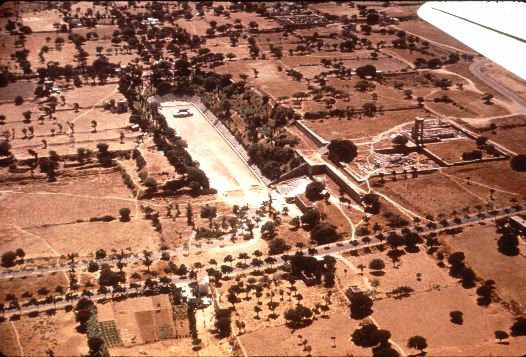
Photograph by Raymond V. Schoder, S.J., courtesy of Bolchazy-Carducci Publishers
The Acropolis of Rhodes
The Temple of Athena Polias at Rhodes
The Acropolis of Rhodes dominated the western and highest part of the city of Rhodes, Greece. It was not fortified like most ancient acropolis. It consisted of a monumental zone with Sanctuaries, large Temples, public buildings and underground cult places.
The buildings were built on stepped terraces supported by strong retaining walls. It was full of fields and groves, in the words of the 2nd c. CE orator Ailios Aristides.
The style of the Hellenistic architecture on the Acropolis of Rhodes was perfectly conveyed by the combination of natural beauty and artificial transformations. The buildings on the Acropolis date to the Hellenistic and Late Hellenistic periods (3rd-2nd c. BCE).
The Temple of Athena Polias
The Temple of Athena Polias and Zeus Polieus is located on the northern edge of the Acropolis. It is orientated E-W and was a Doric peripteral Temple (having a columned portico on all four sides) made of poros.
Four oversize column drums and parts of a capital and architrave still to be seen on the site are an indication of its original monumental character. The larger column drums have 1.20m (48in) in diameter and are 67cm (26.8in) high. The smaller column drums have 1.00m (40in) in diameter and are 62-63cm (24.8in-25.2in) high. The capital has 1.00m (40in) in diameter and is 52cm (20.8in) high [22cm (8.8in) to the abacus and 30cm (12in) to the echinus and rings].
This was where the Rhodians kept the texts of their treaties with other states.
The Temple stood in a larger temenus (enclosure) bounded by a stoa on the east.
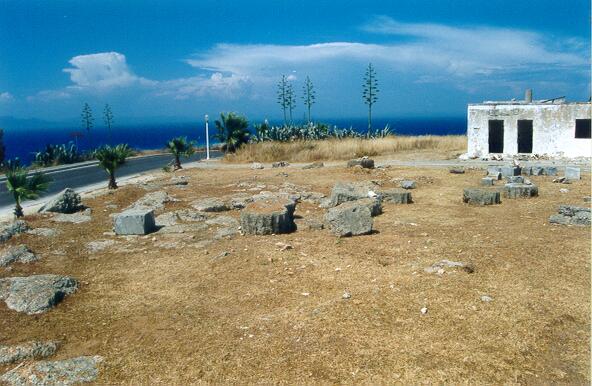
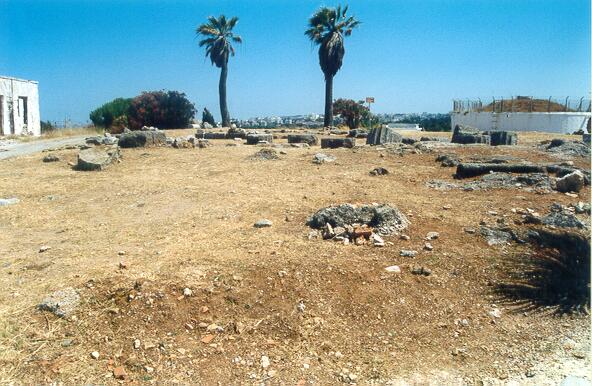
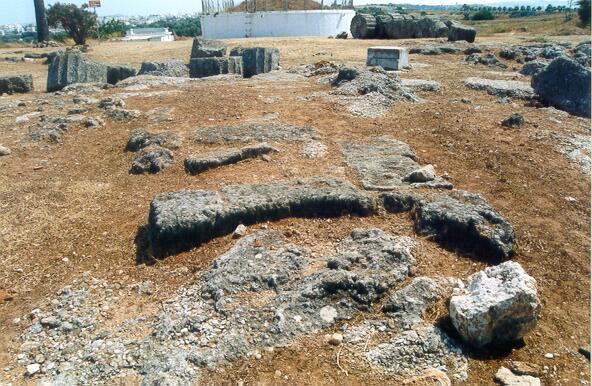
The Temple of Athena Polias at Rhodes
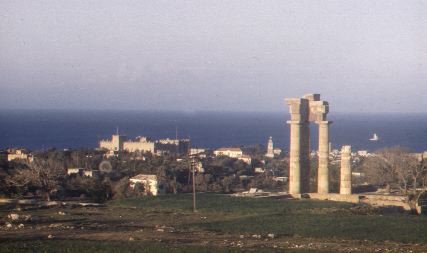
Photograph courtesy of the Department of Archaeology, Boston University, Saul S. Weinberg Collection
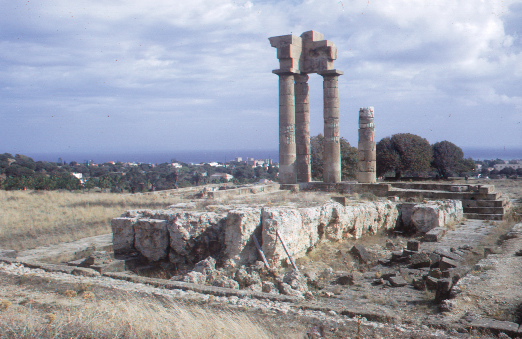



The renowned Italian Archaeological School was entrusted with the work of excavating the Acropolis during the period from 1912 – 1945. But, from the year 1946 the Greek Archaeological Service carried out excavations that provided fascinating insight to the history and topography of the Acropolis.
The entire Acropolis is yet to be excavated. An exclusive
archaeological zone which is all of 12,500 m² has been segregated from contemporary edifices with the primary goal of carrying out long term excavation works that surely is going to provide fascinating insight of the Old City of Rhodes. Some of the significant monuments discovered by archaeologists in the core archaeological zone are mentioned below in brief:
Temple of Athena Polias and Zeus Polieus:
Temple of Athena Polias and Zeus Polieus are located to the northern extreme of the Acropolis. They are distinctly Doric in terms of architecture and are conspicuous by their porticos on all sides. There are four massive column drums as well. It is here that the Rhodians preserved their treaties with other states.
Nymphaia:
The Nymphaia is located to the east and comprises of four cavernous constructions that have been innovatively cut into the rock and is conspicuous with entrance steps, passages and a large aperture in the innermost part of the roof. The Nymphaia is replete with water cisterns and luxuriant foliage. In the past the Nymphaia was meant for worship and recreation.
Odeion:
The odeion is located to the Northwest of the Stadium. It had a capacity to accommodate 800 spectators and archaeologists are of the opinion that the Odeion was used for musical performances or for conducting classes in rhetoric.
Temple of Pythian Apollo:
The Temple of Pythian Apollo stands majestically to the
southern part of the hill. This temple is much smaller in size when compared to other temples that have been found in the site. The North Eastern part of this temples has undergone restoration work
The Stadium is located to the Southeastern part of the hill and was excavated by the Italians during their rule of the island of Rhodes. The stadium was all of 600 feet in length. At present the only original components are the “Sphendone”, “Proedries” and a few rows of seats in the auditorium. Also preserved is The starting apparatus used in athletic events too is well preserved.
Gymnasium:
The Gymnasium is ideally located to the east of the stadium. Excavators were able to unearth a part of the western side of the Gymnasium. In recent times, the Northeastern part of the Gymnasium too was excavated by a team of archaeologists. The Gymnasium was basically a massive square shaped edifice and archaeologists have been able to unearth significant art works from the site.
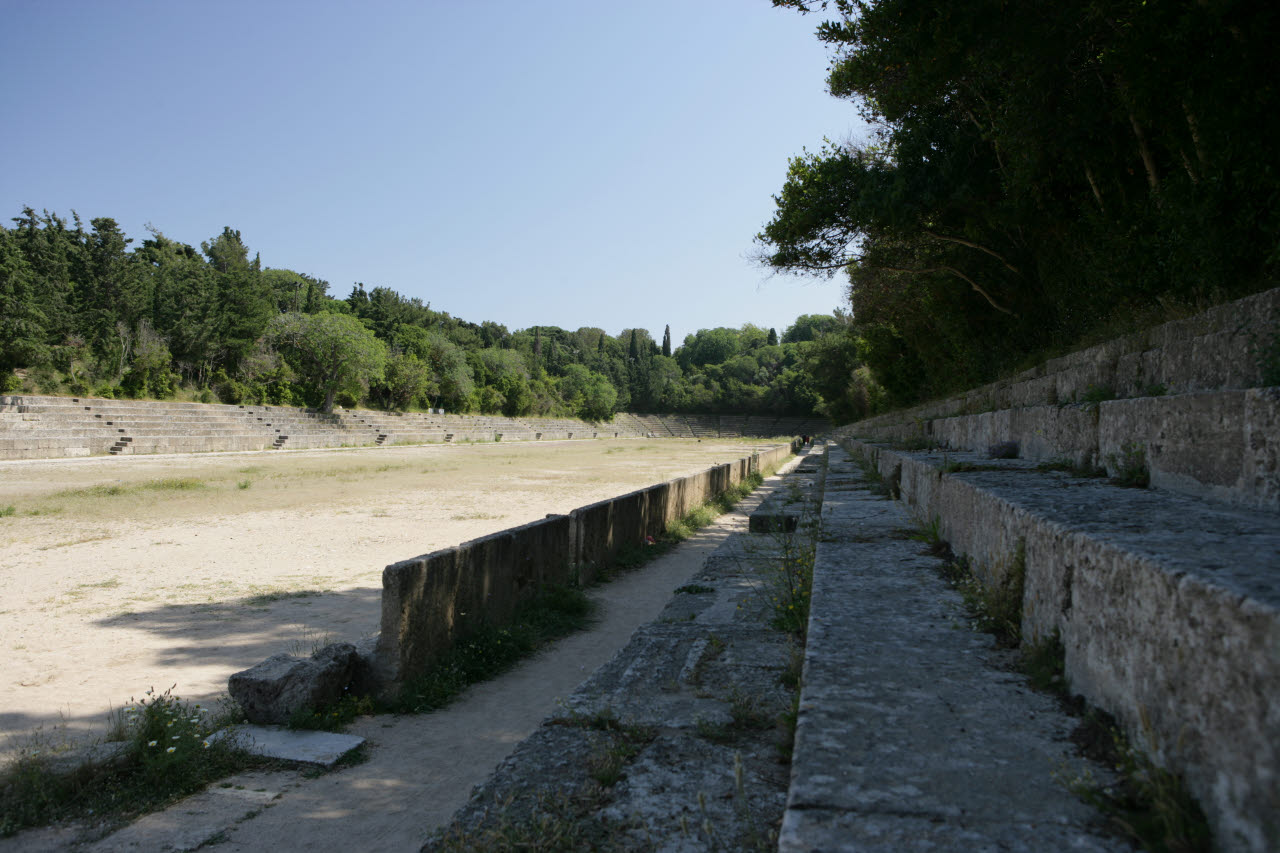



Δεν υπάρχουν σχόλια:
Δημοσίευση σχολίου